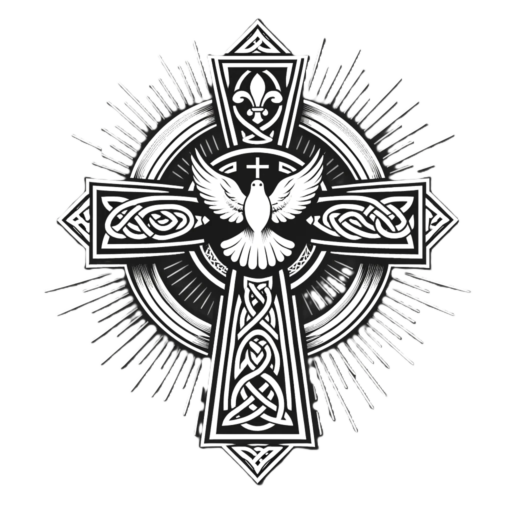Let's Explore the Significance of St. Peter's Primacy in the Church with Biblical References
- Peter as the Rock: Matthew 16: 18 identifies Peter as the “rock” upon which Jesus will build his church, signifying his foundational role in the church’s hierarchy, but not as its founder.
- Keys of the Kingdom: Matthew 16: 19 discusses the “power of the keys” granted to Peter, symbolizing ecclesiastical authority and administrative power over church discipline and governance.
- Binding and Loosing: This passage explains Peter’s authority to establish or prohibit practices within the church, reflecting a significant judicial and legislative role.
- Peter’s Preeminence: Several points highlight Peter’s unique status among the apostles: he receives a special name (“Rock”), is listed first among the apostles, and has unique interactions and responsibilities as indicated by Jesus.
- Leadership and Authority: Peter’s leadership is underscored by his roles in significant biblical events and symbols, such as preaching the first sermon of the Church Age, performing the first miracle of the Church, and being the first to receive Gentiles into the Christian community.
- Peter’s Distinctive Encounters: Specific moments like Peter entering the empty tomb first, being specifically named by an angel as the group’s leader, and receiving direct prayers and instructions from Jesus to support and strengthen his brethren underline his leadership role.
- Biblical Firsts and Recognition: Peter’s numerous “firsts”—including his role in the first Christian council and his frequent mention more than any other disciple—further establish his central role in the early church.
These points collectively emphasize St. Peter’s critical and foundational role in the establishment and governance of the early Christian church, according to traditional Catholic interpretation.
The Profound Legacy: Unveiling the Significance of Early Church Fathers
Discover the Historical Legacy of Saint Peter through Early Church Fathers
- Clement of Alexandria (c. 150-215 AD): Clement refers to Peter as the “chosen, the preeminent, the first of the disciples, for whom alone with Himself, He paid the tribute” (The Stromata, Book III). This suggests a recognition of Peter’s special status among the Apostles.
Summary: Clement highlights Peter as Jesus’ foremost disciple, emphasizing his unique role.
- Tertullian (c. 160-225 AD): In his work, “On Modesty,” Tertullian discusses how Peter was the first to be forgiven by Jesus after denying him three times and then goes on to lead the Apostles. Tertullian also noted the transfer of ecclesiastical authority to the Church of Rome, referring to Rome as the place where Peter’s authority was ultimately established.
Summary: Tertullian focuses on Peter’s forgiveness and leadership, solidifying Rome’s pivotal role in Church authority.
- Saint Irenaeus of Lyon (c. 130-202 AD): In his work “Against Heresies,” Irenaeus emphasized the importance of the Church of Rome, founded by Peter and Paul. He stated, “With [this church], because of its superior origin, all the churches must agree… and it is in her that the faithful everywhere have maintained the apostolic tradition” (Against Heresies, Book III). Irenaeus underscores the idea of apostolic succession, particularly through Peter.
Summary: Irenaeus asserts the Church of Rome’s authority, crediting its foundation to Peter and highlighting its key role in preserving the apostolic tradition.
- Saint Cyprian of Carthage (c. 200-258 AD): Cyprian described the Church of Rome as the Chair of Peter, writing, “Upon him [Peter], being one, He [Christ] built His Church, and although after His resurrection He gives equal power to all the Apostles, and says, ‘As the Father has sent me, even so, send I you: Receive the Holy Ghost,’ yet, that He might display unity, He arranged by His authority the origin of that unity, as beginning from one” (The Unity of the Catholic Church).
Summary: Cyprian emphasizes the unity of the Church, founded on Peter’s singular role and authority.
- Saint Jerome (c. 347-420 AD): Jerome directly pointed out the primacy of Peter, writing, “Simon Peter, the son of John, from the village of Bethsaida in the province of Galilee, brother of Andrew, was the leader of the apostles and after his elevation by a new name of Peter, he deserved to be the first to lay the foundation of the Church” (Lives of Illustrious Men, Chapter I).
Summary: Jerome acknowledges Peter as the first leader of the apostles and the foundational figure of the Church.

I hope this summarized information helps clarify Saint Peter’s significant role within the historical and biblical traditions of the Church. Understanding these foundations is essential in appreciating the continuity and depth of our faith through the ages.

